Feeling lousy? Contact A Malaria Control Unit.
(Published: January, 2015, Volume 15, Number 1, Issue #37) (Table Of Contents)(Author: Kelly Horn)
Although the malaria control and survey units were created during WWII to eliminate mosquitoes, they were also involved in controlling other insects, such as body lice and other flies, as well as mites and rodents. Body lice are blood-sucking insects that can cause body rash, general tiredness, depression, and pessimism (Harwood and James, 1979), hence the term "feeling lousy." In crowded, unsanitary conditions, body lice can multiply quickly that can lead to louse-borne (epidemic) typhus, which is the reason the malaria control units were deployed to treat civilian populations.
Most malaria units were decommissioned soon after the war, but some continued their work as part of the relief efforts in the war-torn areas. In a series of letters from Sgt Jim Austin beginning in February 1946, he chronicles the story of the 40th malaria control detachment (MCD) in Japan.
The following are dates, places (APO data are from Forte and Helbock [1996]), and other information from the covers and letters of Sgt Austin:
On 03 February, the 40th MCD was stationed in Nasu, Japan (APO 352, active from 15 September 1945 to 04 March 1946) and attached to the 11th RD. (This was probably the 11th Reinforcement Depot.)
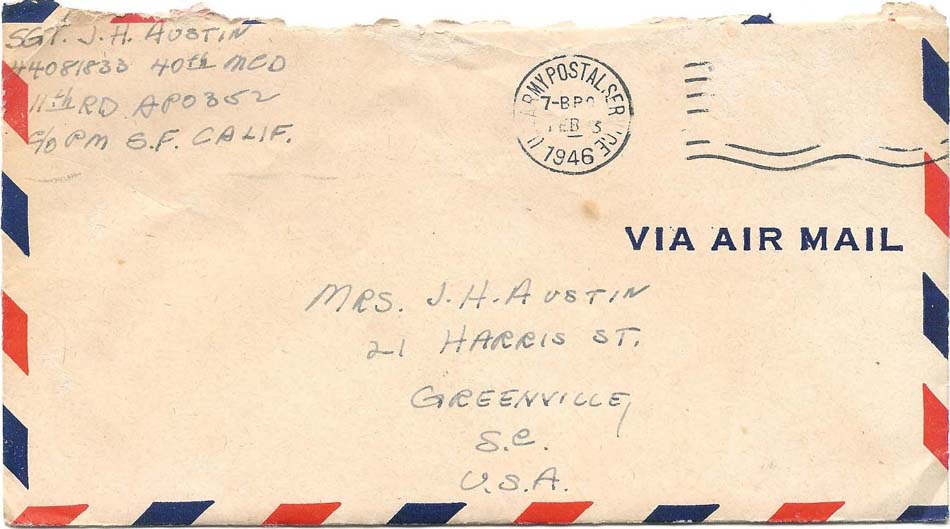
On 27 February, the 40th MCD was attached to the 35th Sta(tion) Hosp(ital) (APO 713, active from 01 October 1945 to 16 July 1957).
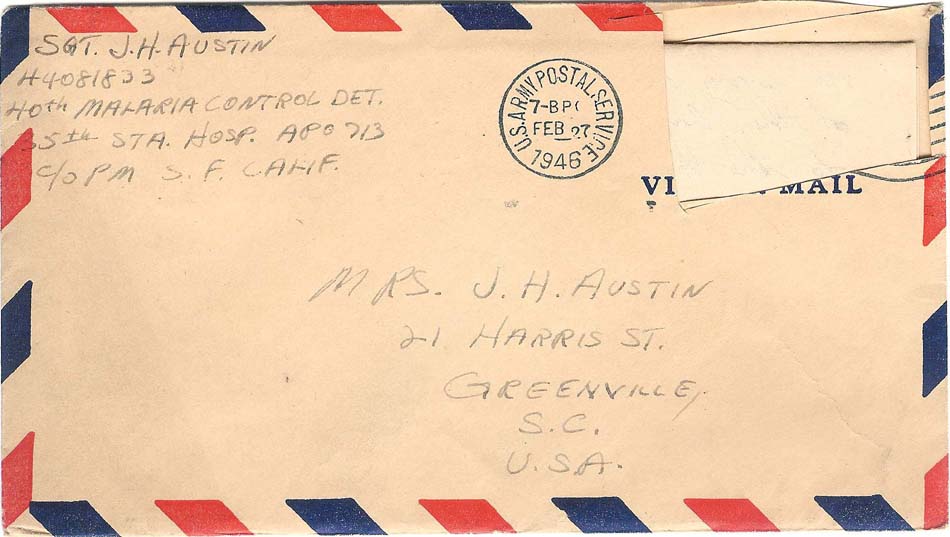
On 12 March, the 40th MCD was with the 30th Military Government (from letter) (APO 25, active from 23 September 1945 to 09 July 1950). In the enclosed letter, Sgt Austin wrote: "We dusted 700 boys this morning at a Roman Catholic Boys School and they were about the best behaved group of boys we've done yet."
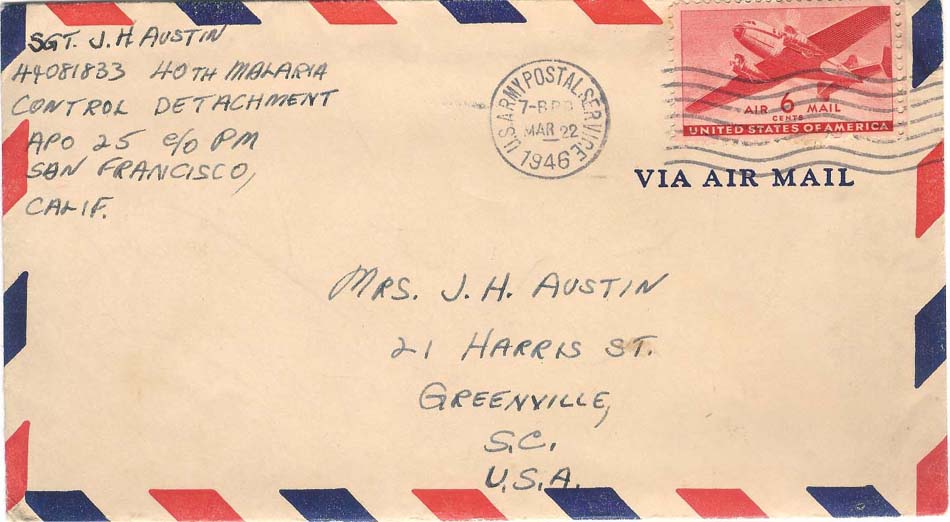
In another letter from Sgt Austin, he briefly describes the delousing of Japanese citizens after the war. "We are really going in for de-lousing the Japs now. We're doing one section of 96,000 starting today. I changed our system today and doubled our 'production' - ha ha. I had the laborers make two lines - one for men and one for women. It takes five 'shots' for men and three for women. The men get one in the front of their pants and one in the back. We did about 3,000 today - actually working about four hours." The dust used to treat these people was probably DDT.
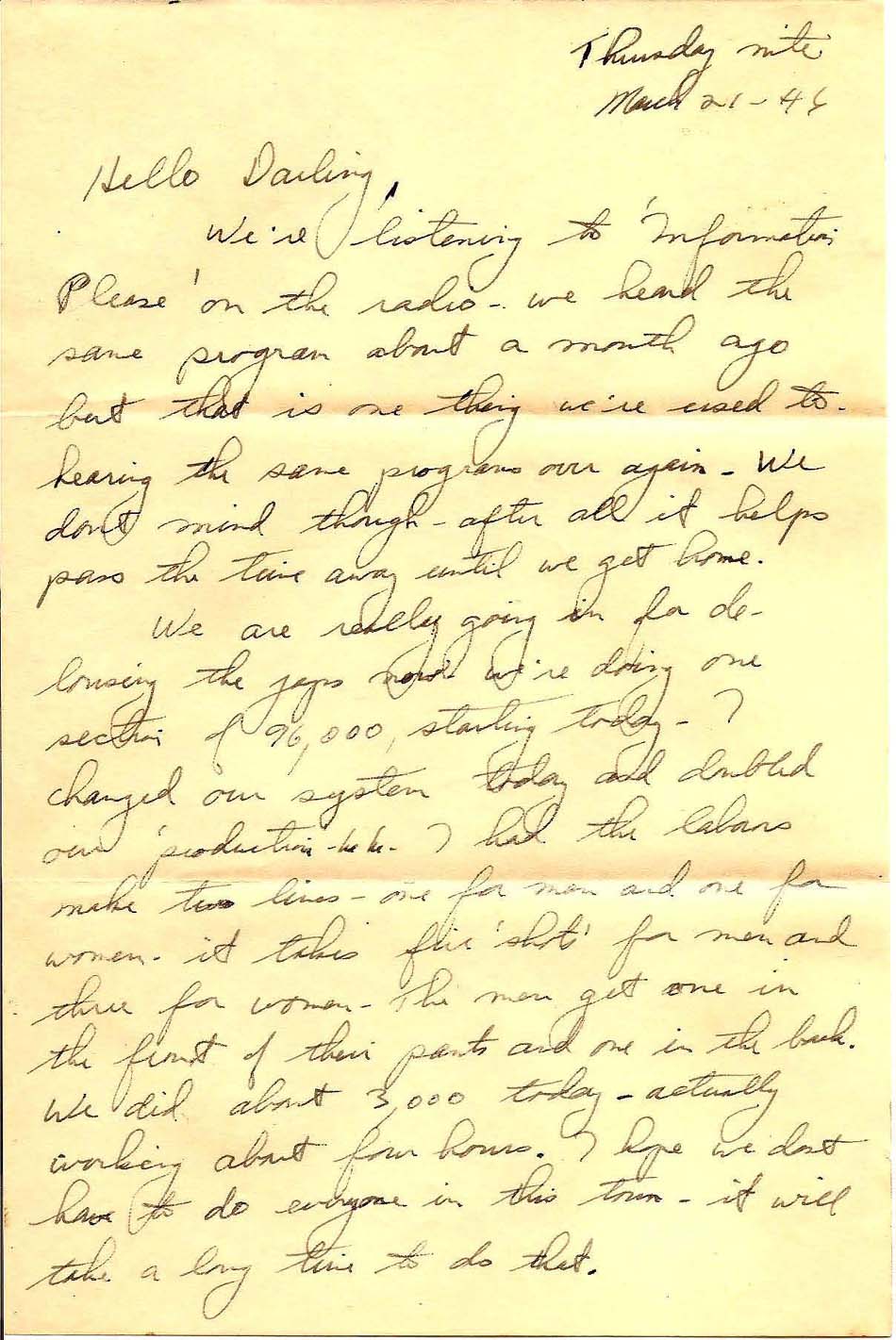
In a letter postmarked, 14 April, the 40th MCD had moved to Kokura (APO 24, active from 22 October 1945 to 01 July 1950), but was in the process of moving to Okayama, and was attached to the 24th Infantry Division.
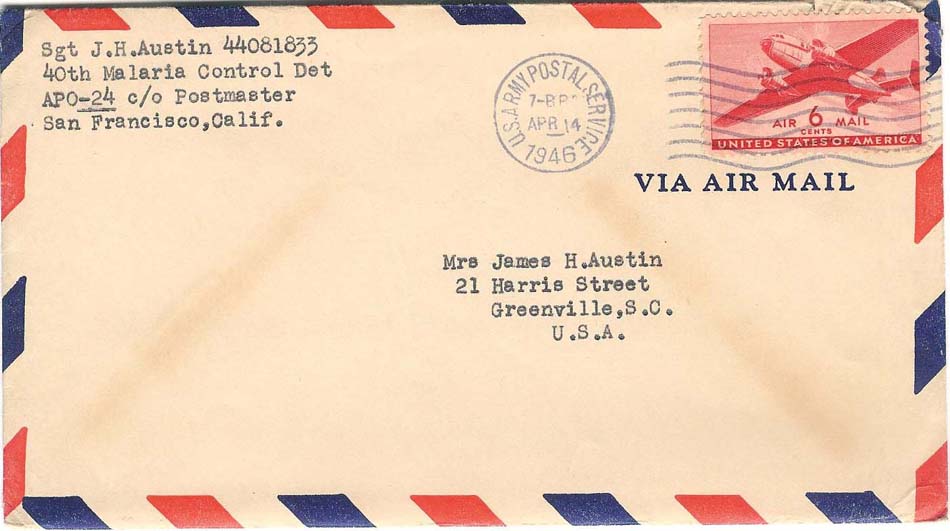
On 01 July, Sgt Austin mentions about going with either the 67th MCD to Kyoto or the 53rd MCD to Osaka. His commanding officer, Lt Kent will become the commanding officer of the 27th MCD, which will have 11 "negroes" in his outfit. Integration had not yet discovered the MCD units. The MCDs each had 11 enlisted men.
Sgt Austin was assigned to Kyoto. In a letter postmarked 06 July from APO 301 (active from 01 Oct 1945 to 30 Apr 1950), his return address identifies the 67th MCD.
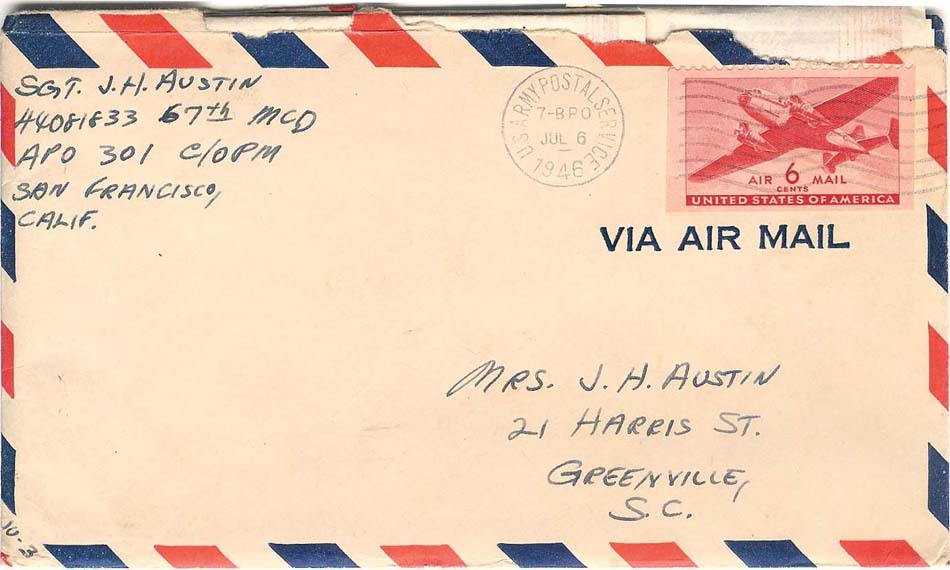
On 11 July, his letter is postmarked from APO 713 again.
In the last letter I have, postmarked 28 August, he writes, "The last one from Kyoto. Yokohama next stop." Yokohama was a point of departure for soldiers to return back to the United States. Sgt Austin was returning home to Greenville, SC after a productive 7 months of defeating an enemy that resulted from the war, Pediculus humanus humanus, the body louse.
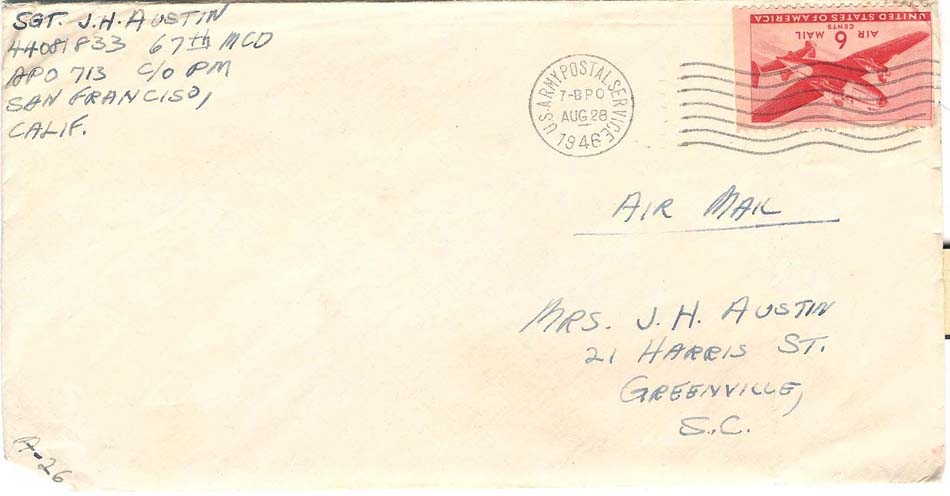
References
-
Forte J and Helbock R W. A price guide to U.S. A.P.O. cancels of the second world war. La Costa Publications. Lake Oswego (OR). 1996.
-
Harwood RF and James MT. Entomology in human and animal health. 7th ed. Washington State University, Pullman (WA). 1979.

